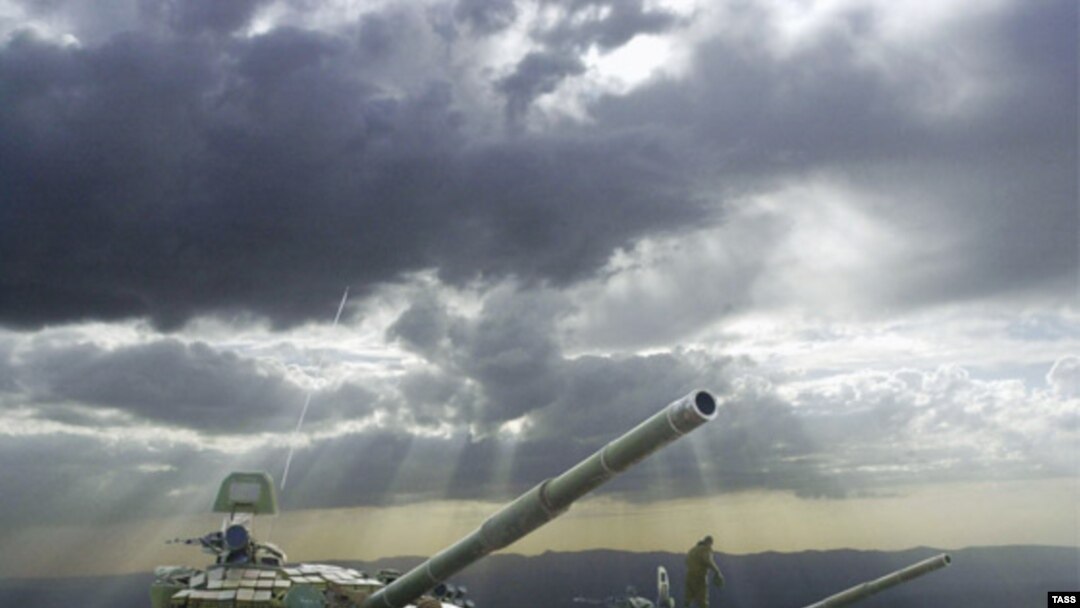"One thing is clear for us," he said. "The CFE regime in its actual form cannot uphold stability and the balance of interests of the signatory states considering the actual military and political developments in Europe."
Ivanov did not indicate whether Russia might consider withdrawing from the treaty, which took nearly 10 years to negotiate between NATO and the Warsaw Pact.
Ivanov was speaking at a security conference in Munich attended by the defense ministers and other senior officials of most European countries, as well as the United States and Canada.
The 1989 CFE treaty placed specific limits on the number of troops, tanks, aircraft, and other weapons, which NATO and the Warsaw Pact could maintain in any part of Europe. It also restricted the military forces from one part of Europe to another in order to prevent a country or group of countries from threatening another.
Ivanov said Russia's doubts about the continuing value of the CFE treaty rested largely on arguments about the continued deployment of Russian forces in Georgia, the Transdniester region of Moldova, and the North Caucasus.
NATO countries argue that an updated version of the CFE treaty agreed in Istanbul in 1999 called for the withdrawal of these military units and their weapons.
Ivanov told the conference that Moscow views these 1999 agreements as political commitments that have nothing to do with the CFE treaty itself.
Russia's objections have prevented the ratification of the 1999 update of the CFE treaty. However Ivanov said Russia had no desire to postpone ratification of the updated treaty.
He said Russia had fulfilled its obligations regarding the deployment of conventional military equipment in the Kalingrad and Pskov regions as well as in the territory of the Leningrad military district.
He said that in the past five years equipment and armaments in these regions had been reduced by 700 pieces.
Ivanov also linked his criticism of the CFE treaty with NATO's decision to admit some former Warsaw Pact countries as members. The latest round of expansion -- set for May -- will take in Bulgaria, Estonia, Latvia, Lithuania, Romania, Slovakia, and Slovenia.
Ivanov said the admission to NATO of seven new members -- four of whom are not signatories to the CFE treaty -- "makes the treaty system of limitations of forces imperfect, under-efficient and cut off from reality."
He also expressed concern about U.S. and NATO plans to establish military facilities in Eastern Europe.
He told the conference: "We are told that the NATO infrastructures currently being established in Eastern Europe are aimed at heightening Alliance capabilities in the fight against terrorism.
"One could concede that some new facilities -- say in Romania or Bulgaria might be utilized as 'hopping-off bases' for operations in the Near or Middle East. But who can explain what the new NATO military facilities in Poland and the Baltics have to do with countering terrorism and in what region?"
The Russian defense minister said the Russian military with appropriate technical means should be allowed permanent monitoring of these facilities to verify that they pose no threat to Russia.
Conventional Forces In Europe
AGREEMENTS ON CONVENTIONAL FORCES IN EUROPE. The CFE treaty is an arms-control agreement originally negotiated between NATO and the Warsaw Pact as a guarantor of European security in Europe in the waning days of the Cold War.
- The original CFE Treaty took 10 years to negotiate, was signed by 30 states ** in November 1990, and came in to force in 1992. Its aim: to reduce stockpiles of conventional armaments between the Atlantic Ocean and the Ural mountains.
The blocs limited themselves to:
20,000 tanks
20,000 artillery pieces
30,000 armored combat vehicles
6,800 combat aircraft
2,000 attack helicopters
- The CFE-1A, a 1992 addendum, has resulted in the withdrawal of more than 700,000 troops from Europe since 2001 and the destruction of 50,000 pieces of military equipment by 1995.
- The CFE-II, negotiated in Istanbul in 1999, reflected the new, post-Soviet landscape by setting arms limits for individual countries, rather than zones. The agreement aided NATO's expansion efforts by allowing signatory states to allow foreign forces on their soil.
- NATO states have not ratified the CFE-II due to concerns over Russia's failure to comply with commitments it made during the negotiations. Under the Istanbul Accords, Russia pledged to set a timetable for closing its remaining military bases in Georgia and to completely withdraw its forces from Moldova.
- The CFE-II will come into force once ratified by all 30 CFE signatories. Thus far only Belarus, Kazakhstan, Russia, and Ukraine have ratified the CFE-II.
- In ratifying the agreement in June 2004, Russia called on the signatories not to delay in ratifying the document. Russia expressed concern that Lithuania, Estonia, and Latvia, as nonmembers of the treaty, could possibly harbor NATO troops near its western border.
(** Armenia, Azerbaijan, Belarus, Belgium, Bulgaria, Canada, Czech Republic, Denmark, France, Georgia, Germany, Greece, Hungary, Iceland, Italy, Kazakhstan, Luxembourg, Moldova, the Netherlands, Norway, Poland, Portugal, Romania, Russia, Slovak Republic, Spain, Turkey, Ukraine, the United Kingdom, and the United States. )


